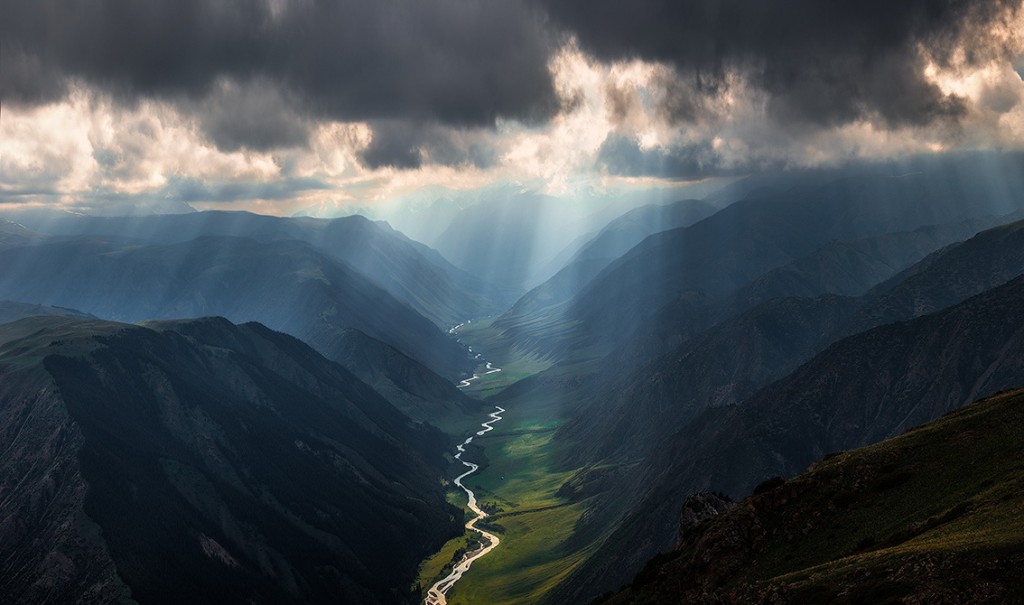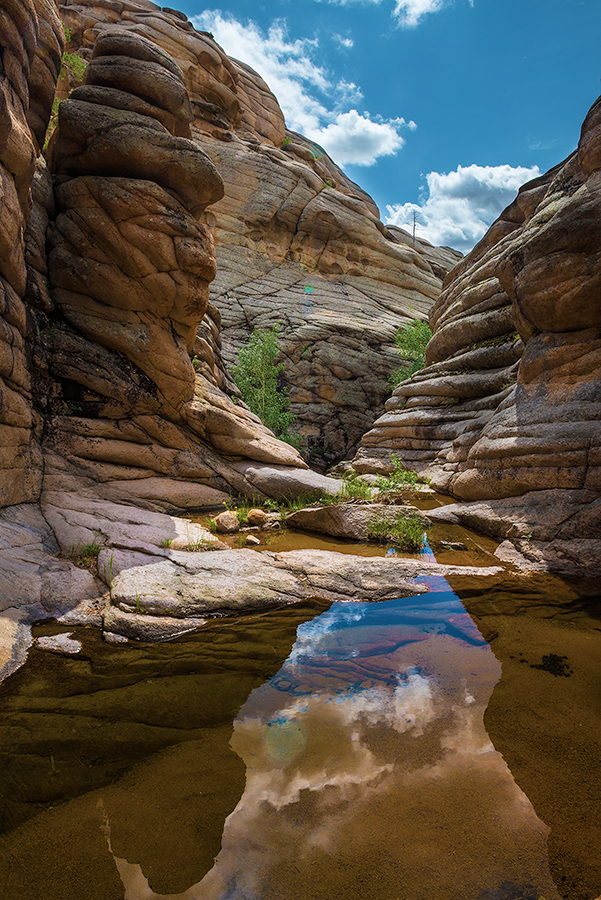ASTANA – Undiscovered Kazakhstan, an exhibition created by Photosafari Group photographers, was presented in South Korea in December with the support of the Foundation of the First President of Kazakhstan. The display of 40 imagestaken all over Kazakhstan in 2014 and 2015 highlights the country’s most beautiful, diverse places. Exhibitions have also been held in Russia, Georgia, Italy, Hungary and China, and have received significant attention and drawn large audiences.
The powerful images, revealing among other scenes a camel caravan in winter, the Milky Way above the steppe, the scenery around salty Lake Tuzkol, wild pistachio trees around the Karatau Mountains, sunflower fields that evoke Van Gogh on the way to Altai and the stunning Martian landscape of Mangistau, serve to debunk the misconception that Kazakhstan is all steppe.
Managers of the project Konstantin Kikvidze and Katherine Koshko spoke for this story about their passion for night photography and plans for developing domestic tourism in Kazakhstan.
“The project was launched five years ago and since then we have visited almost all regions of the country. Our cooperation started with a photographers’ community on the Internet.…The first photography expedition took place in 2006, when we went to the Altyn Yemel National Park. Then we created Photosafari.kz, an association involved in organising trips to different natural locations for photographers. We earned money primarily for car repairs and equipment. We took the best pictures and we worked out brilliant travel routes and found incredible locations, coupled with gaining precious experience during this period. We now are focused on implementing our own noncommercial and commercial projects,” they said.
Kikvidze said there are only a few things that really matter in life: a road, a car and the sunset. “We are especially captivated by night scenery and love shooting skies full of stars,” the photographers added.
The key to their exquisite photographs is planning correctly for the road. The expedition team, consisting of eight to 12photographers, videographers, art critics, historians and zoologists, chooses their trip equipment based on the duration of their trip, their destination, the time of year and the weather conditions. They have to bring all the necessary equipment not only to shoot, but also to survive in the field.
“It is not always possible to plan in advance, as sometimes the weather and other factors may significantly affect the course of the route. It is necessary to sacrifice sleep or food in order to get the best images and, of course, to climb and reach the most inaccessible places. It is possible to come across rare poisonous spiders, scorpions and snakes, or you may easily encounter a bear in the Altai Mountains. But if these animals are not disturbed, you can avoid danger. In addition, they are all of interest to us for pictures and video, so you always need to find a balance between risk and good images,” they explained.
According to Kikvidze and Koshko, the wonder of Kazakhstan is its variety of landscapes, which make it unique in the world.
“No country, except perhaps the United States, can boast suchnature and landscape wealth. We have mountains, steppes, forests, deserts and lakes, and all these natural zones are in relative proximity to each other. In fact, Kazakhstan needs to develop eco-tourism, and this requires information [and] photo and video materials. Among other things, we, of course, are eager to satisfy our own passion as travellers. We really always wanted to see and visit those regions as part of the project and we look forward to new trips because each time we discover these places in a new light. We remember our visit to the Aktolagai Mountains, situated at the bottom of an ancient ocean that existed for tens of millions of years. Can you believe this? There are ancient deposits of shells, remains of sea urchins and mollusks, fossilised coral and other bits from the sea floor. We brought home a lot of underwater relics and even a fossilised shark tooth,” said the photographers.
Kazakhstan’s wild places have inspired them to new horizons this year, they say.
“We have big plans for this year. We are currently working on a new project. The presence of several natural zones and unique landscapes and culture makes for huge potential for Kazakhstan…to take its place in the list of most-visited countries. We have developed unique routes of varying complexity and destinations based on our vast experience and understanding of the nuances of each region of the country. We intend to organise walking tours, ski tours, photography tours, bicycle tours and tours with camper vans. We sincerely believe that tourism will improve the national economy and play a significant role in employing the population,” they said.




